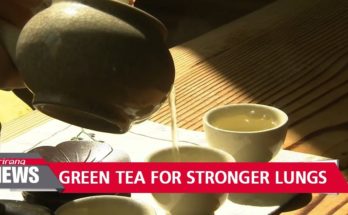Did you know that white, green, oolong, and black teas all come from the same plant? It’s pretty amazing considering how vastly different they are in flavor and color. But what really sets these styles of tea apart is the chemistry that happens in the tea leaves during production. If you line these four types of teas up, there is more than just a gradient of color; it’s a gradient of chemistry too, and each process of production chemically builds on the last — the most rudimentary of which is white tea. White tea production involves plucking the early buds of tea leaves and then lightly steaming them, which is important to denature and deactivate oxidative enzymes in the leaves.
Without steaming, these enzymes can cause chemical changes that impact flavor and color. Next, the leaves are dried out which makes tiny little hairs on the surface stick out, hence the name white tea. The dried leaves are often kept out of direct sunlight to limit the potential breakdown of healthful and flavorful compounds found inside.
The simplicity of production of these tea leaves gives them an delicate, earthy, yet fruity flavor, but for some reason, it’s also lead to a couple myths that we’re going to let steep in some scientific facts. It’s often claimed that white tea has less caffeine than other teas which is actually false.
This myth may have started because the plant used to make white tea in Fujian, China, actually has lower quantities of caffeine than other plants. But generally speaking, the biosynthesis of caffeine happens at a higher rate in younger plants, so white tea buds typically have higher levels of caffeine than mature leaves – so long as they’re not from Fujian.
It is also touted that white tea has higher concentrations of healthy polyphenols, which are known antioxidants. As far as antioxidants are concerned, some studies have shown that white tea can contain higher levels than green tea, but this isn’t always the case. Oolong and Black tea will always have less, due to their production processes but we’ll get into that later.
Overall, white tea is a distinctly delicious drink that does carry healthy antioxidants but because you have to pick it young and protect it from oxidation, it’s much more difficult to produce. Green tea on the other hand, is the easiest to make, which may be why it’s the second most consumed beverage in the Asia- behind water of course.
To make green tea, the leaves are picked when fully mature. Some producers choose to wilt the leaves for up to 24 hours, which causes biochemical degradation that changes the overall flavor and appearance. Wilted or not, the leaves are then subjected to steaming, like with white tea, or oven firing to deactivate oxidative enzymes,, otherwise the end product will not be green.
The steamed leaves are then balled up and left to dry. Because they’re are cultivated maturely, they are easier to produce than white tea, which adds to why green tea is on of the most heavily studied herbs in the world for its range of health benefits.
Green tea leaves are loaded with healthy polyphenols, and in particular four compounds from a family known as flavanols. These compounds are known as catechins, and are thought to potentially improve heart health, prevent cancer, and even potentially help us lose weight. So the process of producing green tea really brings out the best the tea leaf has to offer, with an emphasis on natural flavor and color.
Now we’re going to skip ahead in the gradient to black tea, which is where the production process really takes a new direction – because this time it’s all about oxidation. Just like green tea, mature leaves are picked but this time they are not steamed to halt the oxidative process. Instead they’re mechanically wilted to rupture cells, exposing them to oxygen to get the process of oxidation going.
Then they’re laid out for a period of time to let the oxidation set in. Enzymes like polyphenol oxidase speed things up, quickly clumping the polyphenols inside — like our four catechins — into bigger, reddish brown pigments such as thearubigins and theaflavins.
This oxidative process is referred to as fermentation in the tea industry, but chemically speaking, it isn’t at all. It’s more like aeration. These chemicals impart a bitter, earthy change in flavor, but even though they’re still just bigger polyphenols, they do lose the potentially healthful benefits of the catechins found green and white tea. But it’s not all bad.
There is some evidence that suggests that theaflavins are equally effective antioxidants in the body, so black tea is still considered a healthy beverage. This oxidative process is referred to as fermentation in the tea industry, but chemically speaking it isn’t at all, it’s more like aeration.
The process to make oolong tea rests somewhere between green and black tea production. This time around, the mature leaves are left out to wilt like with green tea, but afterwards they are tossed in baskets to bruise the edges of the leaves and then they’ll lay them out for a period of time.
This makes it so the oxidation process is only partial, leaving behind both polyphenols and their oxidized counterparts, thearubigins and theaflavins. To make sure the process of oxidation doesn’t complete, like with black tea, the leaves are then steamed or fire roasted just like during the early steps of green tea production. Oolong is the best of both worlds, so if you can’t decide between black or green, this one is for you.
Tea has found a place in the heart of every culture around the world. In the states, we’re mostly black-iced-tea drinkers, but if you haven’t tried these other types, make sure you do so. There are other interesting teas and processes that we left out, if you know of any unique ones post them down in the comments. Also, we’d like to thank the Dilmah Tea Company and the Jyotsna Tea Company for letting us use all the awesome tea footage in this video. Thanks for tuning in folks and we’ll see you again soon.
Read More: 4 EFFECTIVELY HEALTH BENEFITS OF OOLONG TEA FOR ECZEMA





